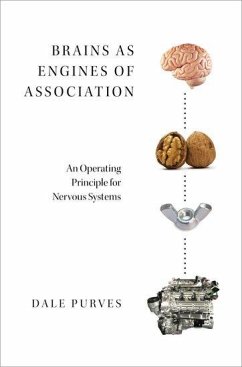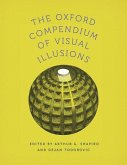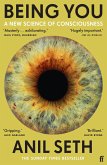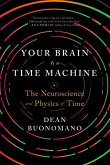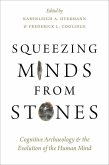Dale Purves
Brains as Engines of Association C
Dale Purves
Brains as Engines of Association C
- Gebundenes Buch
- Merkliste
- Auf die Merkliste
- Bewerten Bewerten
- Teilen
- Produkt teilen
- Produkterinnerung
- Produkterinnerung
Brains as Engines of Association unravels how human brains operate. Based on evidence from vision, audition, speech and music, Purves argues that brains function wholly on the basis of trial and error experience that has been encoded in neural circuitry over evolutionary and individual time. The theory presents a challenge to all neuroscientists.
Andere Kunden interessierten sich auch für
![Handbook of Episodic Memory Handbook of Episodic Memory]() Handbook of Episodic Memory216,99 €
Handbook of Episodic Memory216,99 €![Oxf Compendium Visual Illusions C Oxf Compendium Visual Illusions C]() Oxf Compendium Visual Illusions C466,99 €
Oxf Compendium Visual Illusions C466,99 €![The Limits of Dream The Limits of Dream]() J. F. PagelThe Limits of Dream36,99 €
J. F. PagelThe Limits of Dream36,99 €![Being You Being You]() Anil SethBeing You11,46 €
Anil SethBeing You11,46 €![Your Brain Is a Time Machine: The Neuroscience and Physics of Time Your Brain Is a Time Machine: The Neuroscience and Physics of Time]() Dean BuonomanoYour Brain Is a Time Machine: The Neuroscience and Physics of Time14,99 €
Dean BuonomanoYour Brain Is a Time Machine: The Neuroscience and Physics of Time14,99 €![The Brain, Emotion, and Depression The Brain, Emotion, and Depression]() Edmund T RollsThe Brain, Emotion, and Depression58,99 €
Edmund T RollsThe Brain, Emotion, and Depression58,99 €![Squeezing Minds From Stones Squeezing Minds From Stones]() Squeezing Minds From Stones120,99 €
Squeezing Minds From Stones120,99 €-
-
-
Brains as Engines of Association unravels how human brains operate. Based on evidence from vision, audition, speech and music, Purves argues that brains function wholly on the basis of trial and error experience that has been encoded in neural circuitry over evolutionary and individual time. The theory presents a challenge to all neuroscientists.
Hinweis: Dieser Artikel kann nur an eine deutsche Lieferadresse ausgeliefert werden.
Hinweis: Dieser Artikel kann nur an eine deutsche Lieferadresse ausgeliefert werden.
Produktdetails
- Produktdetails
- Verlag: Oxford University Press
- Seitenzahl: 216
- Erscheinungstermin: 29. April 2019
- Englisch
- Abmessung: 236mm x 163mm x 15mm
- Gewicht: 522g
- ISBN-13: 9780190880163
- ISBN-10: 0190880163
- Artikelnr.: 56498146
- Herstellerkennzeichnung
- Libri GmbH
- Europaallee 1
- 36244 Bad Hersfeld
- gpsr@libri.de
- Verlag: Oxford University Press
- Seitenzahl: 216
- Erscheinungstermin: 29. April 2019
- Englisch
- Abmessung: 236mm x 163mm x 15mm
- Gewicht: 522g
- ISBN-13: 9780190880163
- ISBN-10: 0190880163
- Artikelnr.: 56498146
- Herstellerkennzeichnung
- Libri GmbH
- Europaallee 1
- 36244 Bad Hersfeld
- gpsr@libri.de
Dale Purves is Geller Professor of Neurobiology Emeritus at Duke University, where he moved in 1990 as the founding chair of the Department of Neurobiology. He was subsequently Director of Duke's Center for Cognitive Neuroscience and the Director of the Neuroscience and Behavioral Disorders Program at the Duke-NUS Graduate Medical School in Singapore. His research has sought to explain why we see and hear what we do. He is a member of the National Academy of Sciences, the American Academy of Arts and Sciences, and the National Academy of Medicine.
Preface
PART I. What Nervous Systems Do for Animals
Chapter 1. Putting the Question in Perspective
Introduction
Life on Earth
Defining life
Energy
Evolution
Mechanisms
Teleology
Conclusion
Suggested Reading
Chapter 2. Organisms without Nervous Systems
Introduction
Bacteria
Protists
Plants
The general strategy
Conclusion
Suggested Reading
Chapter 3. Organisms with Nervous Systems
Introduction
Defining nervous systems
The emergence of nervous systems
The emergence of central nervous systems
What do nervous systems add?
What do brains add?
Conclusion
Suggested Reading
PART II. Neural Systems as Engines of Association
Chapter 4. The Organization of Nervous Systems
Introduction
Stimuli
Pre-neural processing
Neural processing
Behavioral output
Neural systems and subsystems are interactive
Conclusion
Suggested Reading
Chapter 5. The Problem
Introduction
Vision as an example
The basic challenge
The answer in general terms
Qualia determined by empirical ranking
Perceptual discrepancies
Mechanisms
Other modalities
The meaning of 'illusions'
Conclusion
Suggested Reading
Chapter 6. Neural Associations
Introduction
Associations wrought be evolution
Associations wrought by lifetime learning
Associations wrought by culture
Behavioral categories of associations
Reward
Behavioral responses as reflexes
What gets associated?
Counterarguments
Conclusion
Suggested Reading
PART III. Evidence that Neural Systems Operate EMPIRICALLY
Chapter 7. Evidence from Lightness and Color
Introduction
Luminance and lightness
Analyzing the occurrence of luminance patterns
Effects of other luminance patterns
Spectral energy and color
The general strategy
Conclusion
Suggested Reading
Chapter 8. Evidence from Geometry
Introduction
Seeing intervals
Seeing angles
Seeing object sizes in 2-D
Seeing object sizes in 3-D
Seeing stereo depth
Conclusion
Suggested Reading
Chapter 9. Evidence from Motion
Introduction
Apparent motion
The perception of speed
Implications for the perception of time
The perception of direction
Conclusion
Suggested Reading
Chapter 10. Evidence from Audition
Introduction
Sound signals
Sources of tones
Sound signal spectra
The problem in audition
An empirical approach
Evidence from speech
Evidence from music
Implications for any sensory system
Conclusion
Suggested Reading
PART IV. alternative Concepts Neural Function
Chapter 11. The Major Options
Introduction
Neural function as feature detection
Neural function as statistical inference
Neural function as efficient coding
Neural function as computation
Conclusion
Suggested Reading
Chapter 12. Summing Up
Introduction
A way around some fundamental obstacles
Empirical ranking
Insight from games
Artificial intelligence
Consequences for neuroscience
The status of reasoning
Novel situations
Choice
Culture
The frequency of stimuli
Conclusion
Suggested Reading
Bibliography
Glossary
Index
Acknowledgments
PART I. What Nervous Systems Do for Animals
Chapter 1. Putting the Question in Perspective
Introduction
Life on Earth
Defining life
Energy
Evolution
Mechanisms
Teleology
Conclusion
Suggested Reading
Chapter 2. Organisms without Nervous Systems
Introduction
Bacteria
Protists
Plants
The general strategy
Conclusion
Suggested Reading
Chapter 3. Organisms with Nervous Systems
Introduction
Defining nervous systems
The emergence of nervous systems
The emergence of central nervous systems
What do nervous systems add?
What do brains add?
Conclusion
Suggested Reading
PART II. Neural Systems as Engines of Association
Chapter 4. The Organization of Nervous Systems
Introduction
Stimuli
Pre-neural processing
Neural processing
Behavioral output
Neural systems and subsystems are interactive
Conclusion
Suggested Reading
Chapter 5. The Problem
Introduction
Vision as an example
The basic challenge
The answer in general terms
Qualia determined by empirical ranking
Perceptual discrepancies
Mechanisms
Other modalities
The meaning of 'illusions'
Conclusion
Suggested Reading
Chapter 6. Neural Associations
Introduction
Associations wrought be evolution
Associations wrought by lifetime learning
Associations wrought by culture
Behavioral categories of associations
Reward
Behavioral responses as reflexes
What gets associated?
Counterarguments
Conclusion
Suggested Reading
PART III. Evidence that Neural Systems Operate EMPIRICALLY
Chapter 7. Evidence from Lightness and Color
Introduction
Luminance and lightness
Analyzing the occurrence of luminance patterns
Effects of other luminance patterns
Spectral energy and color
The general strategy
Conclusion
Suggested Reading
Chapter 8. Evidence from Geometry
Introduction
Seeing intervals
Seeing angles
Seeing object sizes in 2-D
Seeing object sizes in 3-D
Seeing stereo depth
Conclusion
Suggested Reading
Chapter 9. Evidence from Motion
Introduction
Apparent motion
The perception of speed
Implications for the perception of time
The perception of direction
Conclusion
Suggested Reading
Chapter 10. Evidence from Audition
Introduction
Sound signals
Sources of tones
Sound signal spectra
The problem in audition
An empirical approach
Evidence from speech
Evidence from music
Implications for any sensory system
Conclusion
Suggested Reading
PART IV. alternative Concepts Neural Function
Chapter 11. The Major Options
Introduction
Neural function as feature detection
Neural function as statistical inference
Neural function as efficient coding
Neural function as computation
Conclusion
Suggested Reading
Chapter 12. Summing Up
Introduction
A way around some fundamental obstacles
Empirical ranking
Insight from games
Artificial intelligence
Consequences for neuroscience
The status of reasoning
Novel situations
Choice
Culture
The frequency of stimuli
Conclusion
Suggested Reading
Bibliography
Glossary
Index
Acknowledgments
Preface
PART I. What Nervous Systems Do for Animals
Chapter 1. Putting the Question in Perspective
Introduction
Life on Earth
Defining life
Energy
Evolution
Mechanisms
Teleology
Conclusion
Suggested Reading
Chapter 2. Organisms without Nervous Systems
Introduction
Bacteria
Protists
Plants
The general strategy
Conclusion
Suggested Reading
Chapter 3. Organisms with Nervous Systems
Introduction
Defining nervous systems
The emergence of nervous systems
The emergence of central nervous systems
What do nervous systems add?
What do brains add?
Conclusion
Suggested Reading
PART II. Neural Systems as Engines of Association
Chapter 4. The Organization of Nervous Systems
Introduction
Stimuli
Pre-neural processing
Neural processing
Behavioral output
Neural systems and subsystems are interactive
Conclusion
Suggested Reading
Chapter 5. The Problem
Introduction
Vision as an example
The basic challenge
The answer in general terms
Qualia determined by empirical ranking
Perceptual discrepancies
Mechanisms
Other modalities
The meaning of 'illusions'
Conclusion
Suggested Reading
Chapter 6. Neural Associations
Introduction
Associations wrought be evolution
Associations wrought by lifetime learning
Associations wrought by culture
Behavioral categories of associations
Reward
Behavioral responses as reflexes
What gets associated?
Counterarguments
Conclusion
Suggested Reading
PART III. Evidence that Neural Systems Operate EMPIRICALLY
Chapter 7. Evidence from Lightness and Color
Introduction
Luminance and lightness
Analyzing the occurrence of luminance patterns
Effects of other luminance patterns
Spectral energy and color
The general strategy
Conclusion
Suggested Reading
Chapter 8. Evidence from Geometry
Introduction
Seeing intervals
Seeing angles
Seeing object sizes in 2-D
Seeing object sizes in 3-D
Seeing stereo depth
Conclusion
Suggested Reading
Chapter 9. Evidence from Motion
Introduction
Apparent motion
The perception of speed
Implications for the perception of time
The perception of direction
Conclusion
Suggested Reading
Chapter 10. Evidence from Audition
Introduction
Sound signals
Sources of tones
Sound signal spectra
The problem in audition
An empirical approach
Evidence from speech
Evidence from music
Implications for any sensory system
Conclusion
Suggested Reading
PART IV. alternative Concepts Neural Function
Chapter 11. The Major Options
Introduction
Neural function as feature detection
Neural function as statistical inference
Neural function as efficient coding
Neural function as computation
Conclusion
Suggested Reading
Chapter 12. Summing Up
Introduction
A way around some fundamental obstacles
Empirical ranking
Insight from games
Artificial intelligence
Consequences for neuroscience
The status of reasoning
Novel situations
Choice
Culture
The frequency of stimuli
Conclusion
Suggested Reading
Bibliography
Glossary
Index
Acknowledgments
PART I. What Nervous Systems Do for Animals
Chapter 1. Putting the Question in Perspective
Introduction
Life on Earth
Defining life
Energy
Evolution
Mechanisms
Teleology
Conclusion
Suggested Reading
Chapter 2. Organisms without Nervous Systems
Introduction
Bacteria
Protists
Plants
The general strategy
Conclusion
Suggested Reading
Chapter 3. Organisms with Nervous Systems
Introduction
Defining nervous systems
The emergence of nervous systems
The emergence of central nervous systems
What do nervous systems add?
What do brains add?
Conclusion
Suggested Reading
PART II. Neural Systems as Engines of Association
Chapter 4. The Organization of Nervous Systems
Introduction
Stimuli
Pre-neural processing
Neural processing
Behavioral output
Neural systems and subsystems are interactive
Conclusion
Suggested Reading
Chapter 5. The Problem
Introduction
Vision as an example
The basic challenge
The answer in general terms
Qualia determined by empirical ranking
Perceptual discrepancies
Mechanisms
Other modalities
The meaning of 'illusions'
Conclusion
Suggested Reading
Chapter 6. Neural Associations
Introduction
Associations wrought be evolution
Associations wrought by lifetime learning
Associations wrought by culture
Behavioral categories of associations
Reward
Behavioral responses as reflexes
What gets associated?
Counterarguments
Conclusion
Suggested Reading
PART III. Evidence that Neural Systems Operate EMPIRICALLY
Chapter 7. Evidence from Lightness and Color
Introduction
Luminance and lightness
Analyzing the occurrence of luminance patterns
Effects of other luminance patterns
Spectral energy and color
The general strategy
Conclusion
Suggested Reading
Chapter 8. Evidence from Geometry
Introduction
Seeing intervals
Seeing angles
Seeing object sizes in 2-D
Seeing object sizes in 3-D
Seeing stereo depth
Conclusion
Suggested Reading
Chapter 9. Evidence from Motion
Introduction
Apparent motion
The perception of speed
Implications for the perception of time
The perception of direction
Conclusion
Suggested Reading
Chapter 10. Evidence from Audition
Introduction
Sound signals
Sources of tones
Sound signal spectra
The problem in audition
An empirical approach
Evidence from speech
Evidence from music
Implications for any sensory system
Conclusion
Suggested Reading
PART IV. alternative Concepts Neural Function
Chapter 11. The Major Options
Introduction
Neural function as feature detection
Neural function as statistical inference
Neural function as efficient coding
Neural function as computation
Conclusion
Suggested Reading
Chapter 12. Summing Up
Introduction
A way around some fundamental obstacles
Empirical ranking
Insight from games
Artificial intelligence
Consequences for neuroscience
The status of reasoning
Novel situations
Choice
Culture
The frequency of stimuli
Conclusion
Suggested Reading
Bibliography
Glossary
Index
Acknowledgments

